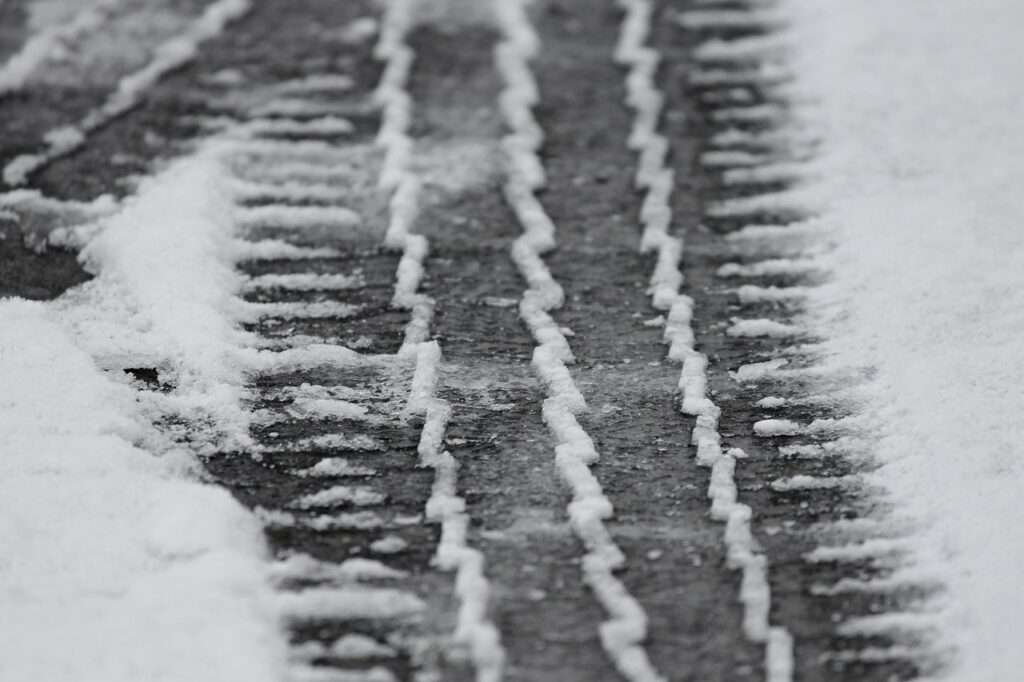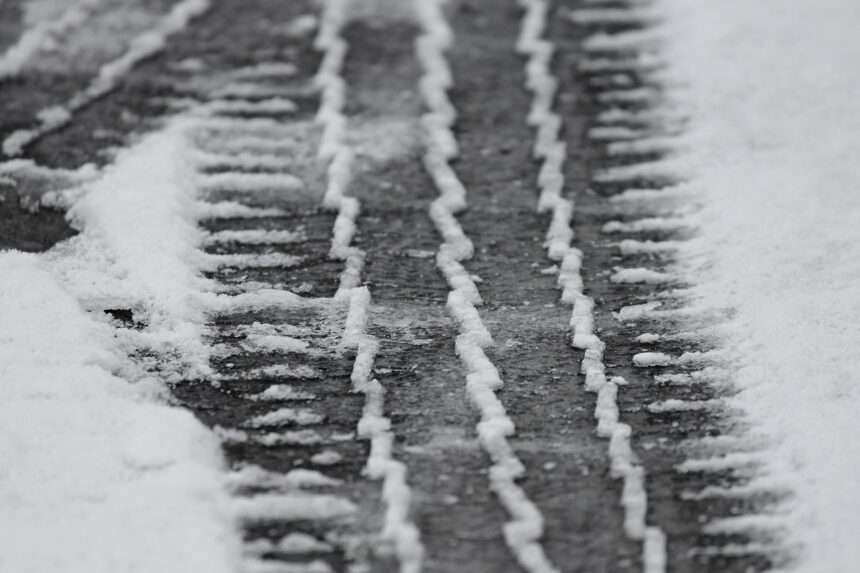Winter car prep 2025 starts with the basics: the right tires, a healthy battery, and smart habits that protect range when temperatures drop. In this practical guide, you’ll get clear steps for combustion cars and EVs, plus checklists you can act on today. Use these winter car prep 2025 tips once, and you’ll feel the payoff all season—better grip, fewer no-starts, and more predictable range.

Quick facts (data-backed)
- EVs in cold weather: Expect roughly a 20–30% range reduction in freezing conditions due to battery chemistry and cabin heating; preconditioning and smart HVAC habits help (AP/Edmunds, WIRED).
- Winter tires matter: Softer compounds and aggressive siping improve grip on snow/ice compared with all-season tires—especially below ~7°C (45°F).
- Batteries hate the cold: Weak 12V batteries show up first thing in the morning—test & replace before the deep freeze rather than after a no-start.
- Winter car prep 2025 checklists + small habits (tire pressure, smooth driving, trip planning) stack up to major gains in safety and confidence.
1) Tires: the heart of winter car prep 2025
Choose the right tire type for your climate
If snow and ice are routine, winter tires (mountain/snowflake symbol) are your best bet. Their cold-rated rubber and denser siping deliver grip when all-seasons turn stiff. In milder regions, modern all-weather tires can be a useful compromise, but a dedicated winter set still wins where storms are common. For true mountains, add approved chains or textile traction devices in your trunk.
Size, tread, and pressure
Going slightly narrower can help cut through slush. Check tread depth (aim for 5 mm+ before deep winter) and set pressures using the door-jamb placard, measured “cold.” Pressure drops ~1 psi (≈0.07 bar) for every 10°F/5.6°C fall, so schedule monthly checks. This is one of the highest-impact winter car prep 2025 habits you can adopt.
Storage and swap timing
Swap on winter tires when nightly lows stay near 7°C/45°F. Store off-season tires in bags, cool and dark, stacked or hung per manufacturer guidance. Label corner positions to encourage even wear next season.

2) Batteries: no-start prevention for 2025
Test now, not on the coldest morning
For gasoline/diesel cars, request a load test of the 12V battery and confirm cold-cranking amps (CCA) meet spec. Clean terminals, check grounds, and consider a smart maintainer if you mostly take short trips. It’s classic winter car prep 2025: a weak battery often works “okay” in autumn yet fails at -10°C.
Oil, alternator, and parasitic loads
Use the oil viscosity in your owner’s manual for winter (lower “W” ratings flow faster at startup). Verify alternator output and hunt parasitic drains (aging dash cams, glove-box LEDs). A quick electrical audit saves roadside calls.
3) Cold-weather EV range: practical ways to keep miles
Precondition while plugged in
Heating the battery and cabin from the grid preserves state of charge and improves fast-charge speeds. Many models allow scheduled departure and app-based preheat—use it every cold morning. Cold slows the battery’s chemistry; preconditioning helps the BMS manage it and stabilizes regen.
HVAC strategy for range
Start with seat and steering-wheel heaters (very efficient), then use moderate cabin heat. Keep Eco mode on, and avoid blasting the defroster longer than needed. Expect some range hit in sub-zero temps even with good habits (plan around ~20–30% loss). See WIRED’s guidance and this AP/Edmunds explainer.
Plan charging with winter in mind
Arrive at fast chargers with a warm battery (drive the last 15–20 minutes). If your route planner supports it, set the charger as your destination so the car preheats the pack. As the NACS/J3400 standard rolls out, site density and redundancy improve—handy during storms (AP coverage).

4) Fluids, visibility, and roadside kit
Fluids that actually help in winter
- Coolant/antifreeze: Confirm freeze point and top up with the correct type.
- Oil: Follow the winter viscosity in your manual; don’t down-grade ad-hoc.
- Washer fluid: Use winter formula rated below your coldest temps; keep a spare jug in the trunk.
- Brake fluid: Moisture contamination raises the boiling point risk; service on schedule.
See and be seen
Install winter wiper blades, clean the inside of the windshield, and spray a water-repelling treatment on exterior glass. Keep a soft brush, scraper, microfiber towel, and extra fluid. Replace any bulb that looks dim or flickery before the storm hits. A clear view is core to winter car prep 2025.
Your minimalist winter kit
Pack a compact shovel, traction aids (sand, kitty litter, or traction boards), jumper cables or a small jump-starter, warm gloves/hat, emergency blanket, flashlight, and a phone power bank. In severe regions, add a tow strap and reflective triangle. For reference lists, see the external sources below.
5) Driving technique that pays off immediately
Smoother is safer—and more efficient
Accelerate gently, leave extra following distance, and brake earlier with light, steady pressure. Avoid abrupt steering. In a skid, ease off the throttle and look/steer where you want to go. Practice in a safe, empty lot after the first snowfall to understand how your car behaves on the edge.
EV-specific driving
On slick surfaces, reduce regen in settings if the rear wheels step out; some cars automatically do this in cold. Keep SOC conservative on longer trips so you can detour if a charger is busy or down. Norway’s experience shows EVs can thrive even in Arctic regions when infrastructure and habits align—proof that winter is manageable with the right prep (Washington Post).
6) Region-by-region tips
- Urban commuters: Prioritize visibility and winter tires; precondition daily; schedule charging at home to finish near departure time.
- Suburban families: Build a robust trunk kit and consider all-weather mats; keep a second scraper and gloves for passengers.
- Mountain drivers: Choose a narrower winter tire, carry chains where required, and learn to disable aggressive traction control for rocking out of deep snow (consult the manual).
7) The 10-minute winter car prep 2025 checklist
- Inspect tire tread/age and set cold pressures to the door-placard values.
- Test the 12V battery (CCA, health report) and clean terminals.
- Top up winter washer fluid; swap to winter wipers; verify all exterior lights.
- Confirm coolant freeze protection; use recommended oil viscosity.
- Load your winter kit (shovel, traction aid, cables/jump-starter, blanket, gloves, light).
- For EVs: enable preconditioning, schedule charging to finish near departure, and save the nearest fast chargers in your nav.
- Clear snow/ice fully—roof, hood, lights, cameras, sensors, and the charge port door.
- Plan routes that avoid steep, untreated streets during storms.

Internal resources on Bulktrends
- Electric Car Buying Guide 2025: 11 Proven Steps
- EV Home Charging Guide: Costs, Speeds, Setup
- Used Car Checklist 2025: 50 Things to Inspect
- Car Insurance 2025: 9 Smart Ways to Cut Premiums
Authoritative external sources
- AP/Edmunds — What to know about EVs in winter
- WIRED — Why EVs struggle in the cold (and how to help them)
- AP — U.S. moves to standardize Tesla’s NACS plug
- Washington Post — Norway’s lessons on EV adoption in freezing climates
- Real Simple — Winter car prep checklist
Conclusion
Do the fundamentals of winter car prep 2025 now—tires, battery, fluids, visibility—and you’ll enjoy calmer commutes, safer stops, and more predictable EV range. Add preconditioning, a thoughtful trunk kit, and smoother winter driving, and you’ll be set for whatever the forecast throws at you.






